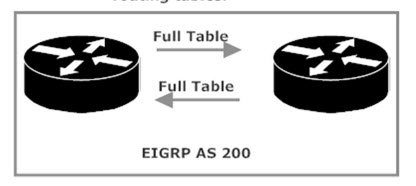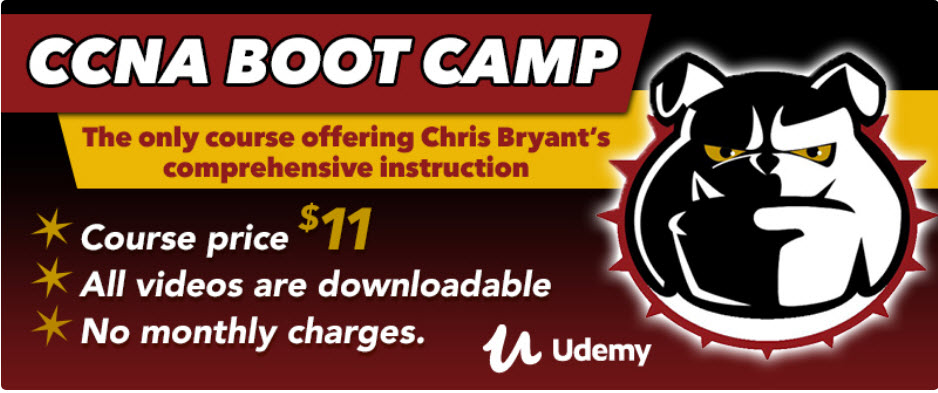CCNA 200-125 Practice Exam 2: EIGRP Fundamentals
Today’s CCNA practice exam is all about EIGRP fundamentals, and success on your exam and in real-world networking is all about the fundamentals. Let’s get right to it!
I also have a full “EIGRP For The CCNA” tutorial series for you.
Comments and questions always welcome on Twitter @ccie12933 and via email at chris@thebryantadvantage.com. Talk to you there!
Question 1: When do EIGRP neighbors exchange full routing tables?

A. Every 30 seconds.
B. When there is a change in the network.
C. Only when they first become neighbors.
D. EIGRP routers never exchange full routing tables.
Question 2: To what address do EIGRP-enabled routers multicast Hellos?
A. 224.0.0.10
B. 224.0.0.9
C. 224.0.0.5
D. 255.255.255.255
E. EIGRP does not multicast Hellos; they are unicasts.
Question 3: Which of the following EIGRP values does NOT have to match between potential neighbors in order for them to become actual neighbors?
A. AS number
B. hello and dead timers
C. K-values
D. Authentication password (if authentication is enabled on both routers)
E. Metric weights
F. All of these values must match in order for an EIGRP adjacency to be completed and maintained.
Question 4: In which of these tables will you find feasible successors? Choose all that apply.
A. Topology table
B. Neighbor table
C. EIGRP route table
D. IP route table
E. DUAL table
Question 5: What is true of the bolded part of this config?
R1(config)#router eigrp 100
R1(config-router)#network 172.12.123.0
A. This is a legal command, but you could use a network mask behind 172.12.123.0.
B. This command is legal as is, but it’s recommended you use a wildcard mask behind the network number.
C. This is an illegal command.
D. The command is legal and there are no further options available.
The answers are coming right up! However, I do ask that you check out my CCNA Video Boot Camp when you’re done here. That link gets you in for a crazy price, and over 72,200 students have already joined. Join us today!
See you there!
Now let’s get to the answers…
Answer 1: C. EIGRP neighbors only exchange full routing tables when they first become neighbors. After that, they’ll exchange updates only when there’s a change in the network, and even then the updates will reflect the changes only rather than performing a full routing table exchange.
Answer 2: A. EIGRP multicasts hellos to 224.0.0.10.
Answer 3: B. Unlike OSPF, EIGRP does not require neighbors to agree on the hello and dead timers. (In EIGRP, the dead timer is called the hold timer.) It is strongly recommended they do agree on those timers, though. You may end up with an up-and-down adjacency if they don’t match.
Answer 4: A. Feasible successors are found only in the topology table.
Answer 5: B. You can use the network command without a wildcard mask in EIGRP, but it’s recommended you do use one. In contrast, OSPF requires the use of a wildcard mask in the network command.
That’s it for today! I’ll see you here tomorrow with another new CCNA practice test! (A full list of free CCNA tests is available on that linked page.)
Chris B.





